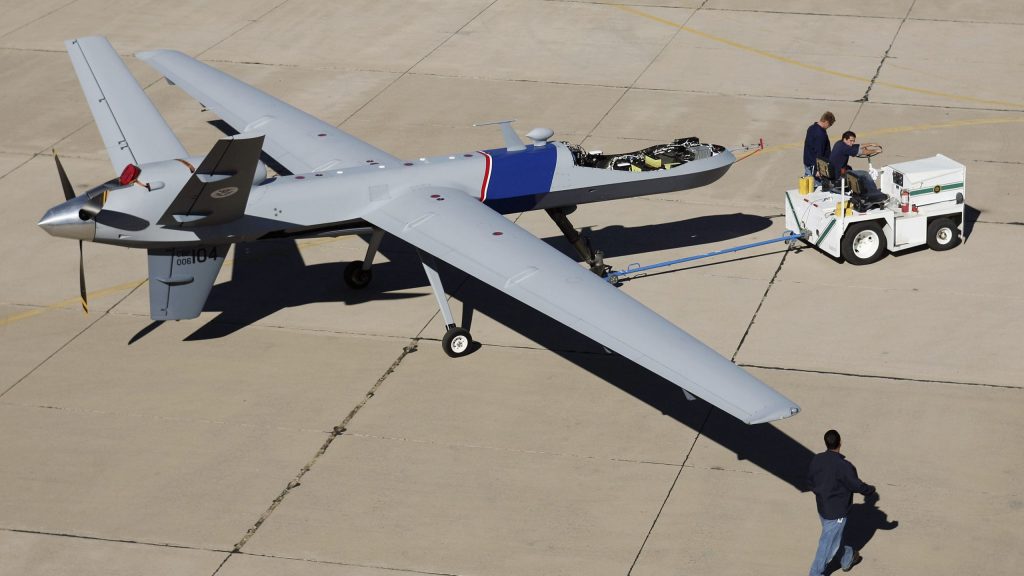Daniel Vardiman

The excitement over artificial intelligence, quantum computing, and automation in support of military capabilities is growing inside policy circles. Industry is eager to develop new tools, and the US Department of Defense (DoD) is keen to operationalize new concepts. The mood suggests that we are on the cusp of the next military revolution.
The faith in these developments stems from the confidence that they will make warfare faster and safer, put fewer people in harm’s way—and, crucially, make future capabilities cheaper than traditional military hardware. On the surface, that’s a fair assumption: Service members are the most expensive single item on the annual budget, and any new system that improves proficiency and lowers the number of required personnel should lead to a more effective force and lower costs.
The reality might be more complicated. Take the highly successful MQ-1 Predator drone, for instance: It helped usher in the age of remote piloting and shaped concepts of military automation. When it first came on the scene in 1996, it was heralded as a replacement for the SR-71 and U-2 manned espionage planes to limit the risk to pilots. But really, the Predator did more to fill a gap in requirements than it did to replace a capability. The requirements for U-2s, for example, didn’t go away: The spy planes were designed to fly at high altitudes to avoid most threats and look far into enemy territory from a safe distance. In contrast, the Predator operates at lower altitudes and provides greater flexibility for surveillance operations inside threat windows.
Once the Predator capability was fully realized, demand skyrocketed. In terms of sheer cost, unmanned aerial vehicles (UAV) still pose a clear benefit. The Predator program was retired in 2018 to make way for newer MQ-9 platforms, which according to the latest DoD reimbursement rates cost $737 per hour to operate—compared to the U-2’s cost per hour of $22,397. Therefore, the cost savings for a UAV compared to a U-2 are compelling. But that raises a major question: Can automation help to reduce costs when the system behind it is labor-intensive?
An excellent example of the impact of automation on US Navy systems is the evolution of the five-inch gun. During World War II, the Sims and Fletcher class destroyers were the first to be outfitted with these guns, which would take between fifteen and twenty-seven sailors to operate. The complement for the Fletcher Class destroyer during that war was 329; today’s Arleigh Burke class destroyer takes only six sailors to operate its five-inch gun, which is part of a fully integrated weapons system, but its complement remains between three and four hundred personnel.
In reality, manpower savings were re-applied to facilitate the expansion of the destroyer’s mission areas, including anti-aircraft and -submarine warfare, ballistic-missile defense, and the operation of Tomahawk cruise missiles. In this case, greater automation in one area facilitated greater lethality in new weapons systems.
Implications for the future
While the promise of automation is indeed exciting, the lessons learned from the Predator program and the evolution of the five-inch gun suggest cost savings through automation depends on how much manpower remains in technical support roles. In other words: The reduction of manpower at the micro level on a specific system could lead to lower cost per system; but at the macro level, the manpower is simply shifted elsewhere. Where automation is most valuable is in streamlining processes to deliver information or capabilities faster and with less risk.
With that in mind, here are some key implications of automation on manpower in the military:Actual cost savings for manpower will never materialize due to the demand to constantly innovate with new ideas, push the limits of every warfare system, and identify methods for improvement. This is manpower-intensive, no matter how much automation can streamline capabilities.
Automation tools need to be flexible enough to facilitate innovative concepts as operators mature and adapt to processes.
If automation increases in complexity, it puts greater demands on increased training for operators, thus increasing costs in time, training, and experience.
None of this should stop the incorporation of automation into systems. But these points should be closely considered when developing new systems that include automation. One principle for considering automation: Always strive for the greatest efficiency for both output and for the use of manpower. Achieving the highest level of output with the least amount of input needs to serve the users with easy-to-use interfaces while reducing the demand for technical support. The challenge is incorporating complex systems for easy human interface and consumption, as this will help reduce training requirements and make decision-making easier.
Additional research will help determine whether the evidence from the Predator and five-inch gun examples holds more broadly. Industry needs the ability to understand how capabilities will be incorporated into staffs in order to help provide greater efficiencies that can lead to cost savings for manpower. By partnering with DoD, industry can make even greater strides in automation that will lower the risk to personnel while preserving warfighting capability. Building the future force that incorporates efficiency-boosting automation to save on manpower won’t necessarily lower the military budget; but it will lead to increased readiness and a more effective force.
No comments:
Post a Comment